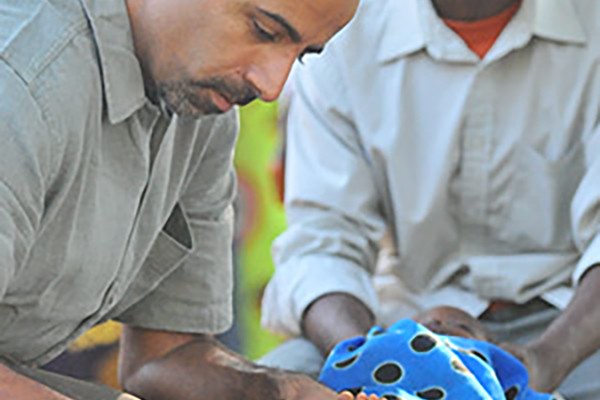Making teeth tough: Beavers show way to improve our enamel
Beavers don’t brush their teeth, and they don’t drink fluoridated water, but a new study reports beavers do have protection against tooth decay built into the chemical structure of their teeth: iron. The research team, which was led by scientists from Northwestern University, included Jill D. Pasteris, PhD, professor of earth and planetary sciences in Arts & Sciences.
Medicare Advantage enrollment increasing in rural areas
More rural Americans are signing up for Medicare Advantage despite reductions in payments, according to new research from the Brown School at Washington University in St. Louis. Extra benefits may be among the likely reasons, says study co-author Timothy McBride, PhD, professor at the Brown School.
Wash U Expert: Measles not only serious disease we’re failing to vaccinate against
While measles and the human papillomavirus (HPV) are vastly different diseases, failing to get vaccinated against them can have equally serious consequences, suggests Bradley Stoner, PhD, a medical anthropologist who studies infectious disease transmission at Washington University in St. Louis.
‘Blues for Mr. Charlie’ runs Feb. 20 to March 1
The killing is not in doubt: A black man is dead; a white man pulled the trigger. The only real question is why. James Baldwin wrote “Blues for Mr. Charlie” in 1964. But today, the echoes of Ferguson are impossible to ignore. The production of the Performing Arts Department in Arts & Sciences at Washington University in St. Louis runs Feb. 20 through March 1 in Edison Theatre.
Forty-year-old Apollo 17 samples help date lunar impacts
It’s been more than 40 years since astronauts returned
the last Apollo samples from the moon, and since then those samples have
undergone some of the most extensive and comprehensive analysis of any
geological collection. A team of scientists has now
refined the timeline of meteorite impacts on the moon through a
pioneering application of laser microprobe technology to Apollo 17
samples.
England named Wolff Professor of Medicine
Sarah K. England, PhD, a professor of obstetrics and gynecology, has been named the inaugural Alan A. and Edith L. Wolff Professor of Medicine at the School of Medicine.
Navigating the college application process
Some 120 Washington University students help mentor local high school students through the college application process in a national mentoring program called Strive for College. The program was started on the Washington University campus in 2007 by a group of Rodriguez Scholars and today thrives under the leadership of alum Michael Carter. On Monday, Feb. 16, local high school participants will visit
Washington University, where they will shadow mentors in class
and around campus.
Legail Chandler named vice chancellor for human resources
Legail P. Chandler, assistant dean and executive director of human resources at the School of Medicine, has been named vice chancellor for human resources at Washington University, according to Chancellor Mark S. Wrighton. Chandler, whose appointment is effective immediately, succeeds Lorraine Goffe-Rush, who was named vice president for human resources at the Massachusetts Institute of Technology.
Stressed bees die sooner, leading to abrupt collapse of colonies
Pathogens, pesticides and nutritional deficits have previously been identified as stressors linked to colony collapse disorder, but it was a mystery why bee colonies sometimes collapsed so rapidly, leaving bee keepers with an empty hive box. A new study suggests that when a colony is stressed, young bees are forced to become foragers much sooner than they otherwise would and this accelerated development leads to their early death.
New approach to childhood malnutrition may reduce relapses, deaths
Children treated for moderate acute malnutrition experience a high rate of relapse and even death in the year following treatment and recovery. A new study led by School of Medicine researchers has found that target weights and measures of arm circumference used in assessing the health of malnourished children are insufficient and that raising these thresholds could significantly lower the rate of relapse.
View More Stories



